Any effective social media strategy begins with diving into the details of your audience. Understanding who they are, their preferences, and how they engage with content across different social platforms is key to creating content that stands out. That all starts with a thorough social media audience analysis.
In this guide, we’ll break down the steps of a social media audience analysis, arm you with the tools you need, and unleash some insider tips to help you get it right. Ready to level up your social media game? Let’s do this.
Why Audience Analysis Matters
Understanding your audience isn’t just a nice-to-have — it’s crucial for crafting social media content that hits the mark. By diving deep into audience analysis, you uncover the insights you’ll need to guide your content strategy.
How? Well, first off, knowing your audience helps you create tailored content that resonates. Nailing down your audience helps you craft content that speaks directly to their interests, pain points, and aspirations. Whether it’s funny memes, helpful how-tos, or inspiring stories, tailoring your content ensures it keeps your audience engaged.
Similarly, audience analysis also plays a crucial role in making sure you’re not wasting your advertising budget. By pinpointing who your ideal customers are, you can target your ads more effectively and get your message in front of the right people.
And of course, when you speak your audience’s language, address their pains, and cater to their preferences, you’re building more than just followers — you’re cultivating brand loyalty.
Types of Social Media Audience Analysis
To conduct the ultimate social media audience analysis, you’ll need to look at different facets of your audience. Let’s break it down into four main types: demographic, psychographic, behavioral, and competitive analysis.
Demographic Analysis
This type focuses on the basic characteristics of your audience, laying the foundation for understanding who your audience is at a surface level. Think age, gender, location, and other demographic factors that can help you tailor your content and messaging.
Inter Miami, for example, uses both English and Spanish in its social posts. While based in Florida, this top sports team clearly knows the demographics of its audience, which includes a significant amount of Spanish-speaking soccer (or fútbol) fans.
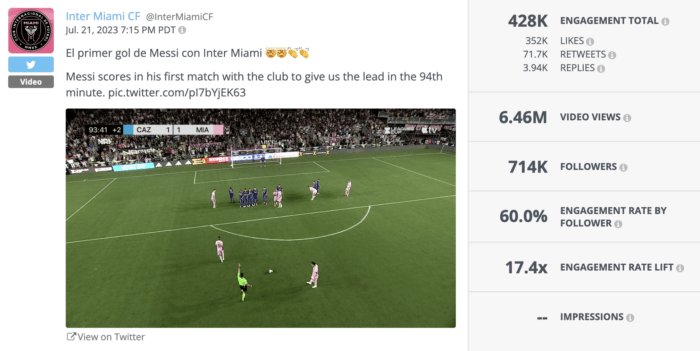
Psychographic Analysis
Unlike demographics, psychographics go deeper into the interests, hobbies, and lifestyle choices of your audience. Knowing what they truly care about allows you to create content that truly speaks to them.
Patagonia’s social strategy reflects this well. With environmental activism as one of its core tenets, the brand seeks to connect with others who care about the same issues. Knowing that this kind of audience values businesses that take a public stand, its social feeds are filled with content spotlighting important initiatives, solidifying its place as one of the top sustainable brands on social media.
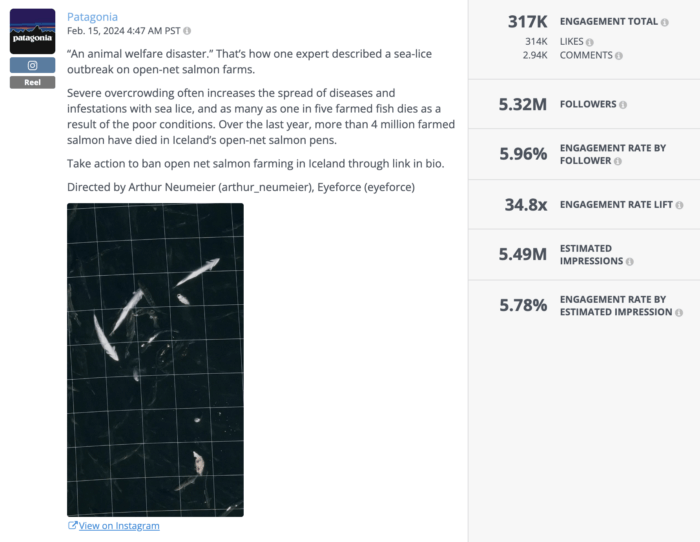
Behavioral Analysis
This type examines how your audience interacts with your content, engagement patterns, and online behaviors. What role does social media play in their customer journey? Understanding your audience’s behaviors helps you refine your social media strategy and optimize your content for the greatest impact.
For instance, Hard Rock Hotels has caught onto the rise of users using social media as a search engine. As explained in our run-down of the top hotel brands on social media, Hard Rock Hotels smartly includes common search terms such as “pet-friendly hotel” in its posts to maximize its reach.
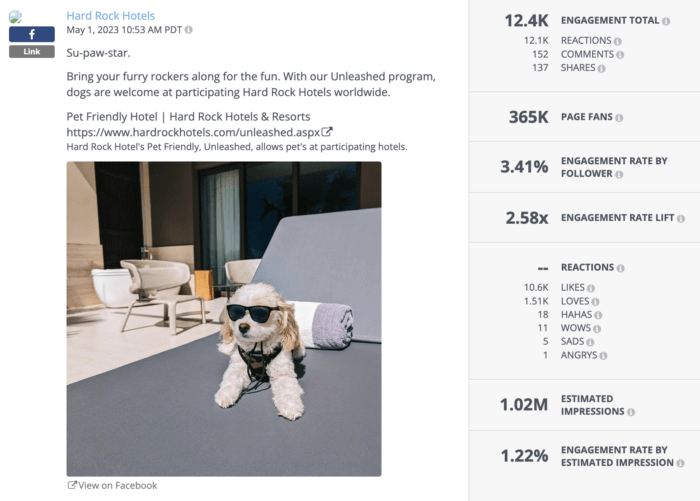
Competitive Analysis
As the name suggests, competitive analysis involves evaluating your competitors’ audience strategies, identifying gaps, and uncovering opportunities in the market. By learning from your competitors’ successes and failures, you can refine your own strategy and stay ahead of the curve.
Ultimately, while each type of analysis offers valuable insights on its own, taking a holistic approach that combines all four types gives you a complete picture of your audience: who they are, what they love, how they behave, and how your rivals are interacting with them.
Your Step-by-Step Guide to Social Media Audience Analysis
1. Define Your Objectives
Before conducting your social media audience analysis, first define your objectives. What do you want to achieve? Are you looking to increase brand awareness, drive website traffic, or improve customer engagement?
By setting clear goals, you give your analysis purpose and direction. Plus, it ensures you’re not just collecting data for the sake of it but rather to inform actionable insights and strategies.
2. Identify Relevant Social Media Platforms
To effectively collect and analyze audience data, you’ll have to select which platforms to look at. Consider your goals and what you know about your target audience as you narrow it down.
Say you’re a B2B brand focusing on engaging decision-makers and professionals. LinkedIn is definitely a platform to include in your analysis. On the other hand, if you’re a fashion brand looking to connect with visually-driven millennials, platforms like Instagram or Pinterest might be more suitable.
Taking a look at Viking Cruises, it’s clear that they’ve honed in on the platforms that matter most to their main audience of older (often retired) adults. As reported in our coverage of the top travel brands on social, the cruise line prioritizes Facebook — a favorite among their target demographic — and omitted the comparatively newer platform TikTok from its strategy.
3. Choose the Right Tools
Many social media platforms have built-in analytics that offer insights into your audience. Facebook, Instagram, Twitter, TikTok, and LinkedIn all have these tools, providing data such as demographic information, engagement metrics, and even the peak times your audience is online. These tools are a great starting point, providing valuable info from the source.
If you want to step up your game, consider using third-party tools. Most social media analytics tools consolidate all your data in one place, which streamlines your analysis process. Plus, some platforms specialize in providing additional insights.
For instance, Rival IQ excels in competitive analysis, going beyond native tools’ capabilities by reporting information about competitors and allowing for in-depth benchmarking. Our dashboard makes it easy to see your performance stats, how your numbers compare to other brands, and even the top posts of each of your competitors.
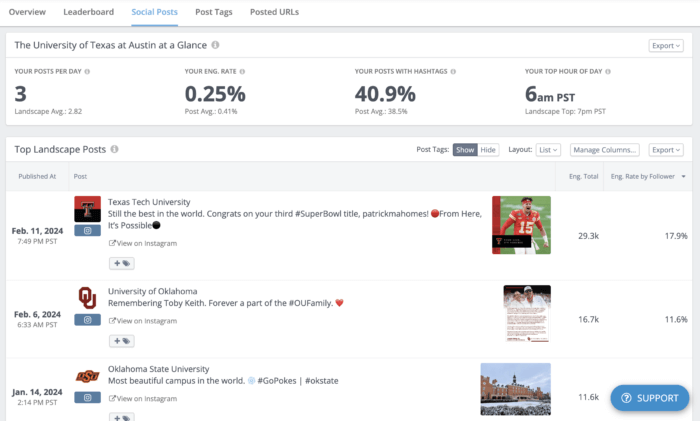
Meanwhile, social listening tools make it possible for you to “eavesdrop” on your audience’s conversations about your brand, industry, competitors, and more. This not only tells you about their opinions and preferences but also gives you insight into how they use social. And, we can’t leave out web analytics tools like Google Analytics, which can help you understand how your social media channels are driving traffic to your site.
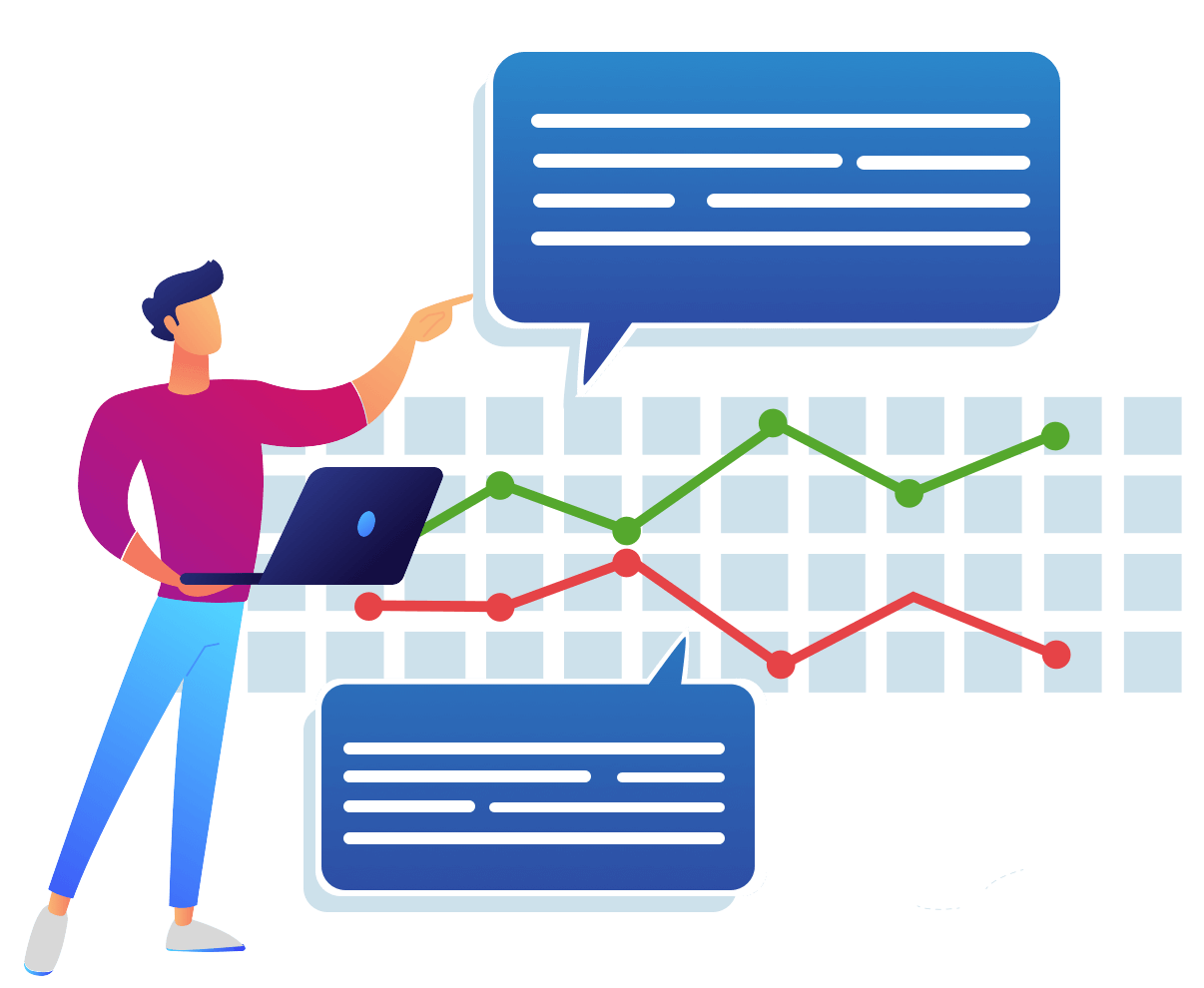
Get started with Social Listening in Rival IQ.
Get my free trial4. Collect Data
Once you’ve got your goals, platforms, and tools, it’s time to roll up your sleeves and dive into the data.
First up, let’s talk about the kinds of data we’re looking for. The data discussed earlier is a good place to start, though feel free to adjust based on your goals: demographics (age, gender, location), psychographics (interests, hobbies, attitudes), behavioral data (engagement patterns, content trends, online behavior), and competitor performance.
Now, where do we find all this data? The tools we discussed earlier! Native tools can give you insights into your following on a specific platform, while competitive analysis and social listening tools can offer more details about your competition, trends, and audience behavior.
5. Analyze Data and Draw Insights
Once you’ve collected the data, it’s time to analyze it for meaningful insights. Here are a few ideas to help you get started:
- Identify trends and patterns. Look for recurring themes or behaviors in your audience data. Are there peak times when your audience is active? Are there certain keywords or hashtags frequently associated with your brand? Are certain demographics more engaged with your content?
- Discover audience preferences via engagement metrics. Pay attention to the types of content your audience engages with the most. Do they prefer videos, images, or text-based posts? Are they more interested in industry news or entertaining memes?
- Compare across networks. If you’re active on multiple social networks, compare the performance of your content across them. This can help you adjust your approach for each platform.
- Analyze competitor activity. Keep an eye on what your competitors are doing by analyzing their engagement strategies and content themes.
- Identify opportunities and challenges. Take note of any gaps or areas where your audience’s needs aren’t being fully met. Are there topics or themes that seem to be missing from your or your competition’s content strategy?
Essentially, you want to focus on pulling insights that can meaningfully inform your content strategy moving forward — which brings us to our next and final step.
6. Streamline Your Content Strategy
Now that you have a solid understanding of your audience, you can finally take what you’ve learned and use it to optimize your content strategy.
Tailor your content to match the identified trends and preferences of your audience. For instance, if your data shows that your audience loves videos over static images, consider ramping up your video production. Also, post during the peak times when your audience is most active to maximize visibility and engagement. Similarly, if you’re on multiple platforms, adjust your approach to match the findings on each.
Don’t forget to fill in the gaps you identified. Are there unexplored themes or topics that align with your brand but are missing from your strategy? Take this opportunity to incorporate the kind of content that your audience is already loving from others or has expressed an interest in.
Finally, consider audience segmentation as you streamline your strategy. Your audience is likely not a uniform bunch. Tailor specific content for different segments within your audience, recognizing and catering to their different preferences and interests. This strategic approach can help boost engagement and foster a deeper connection with your audience.
Remember, audience analysis is an ongoing process. Keep monitoring and refining your approach based on new data and changing audience trends. By staying agile and responsive, you’ll be better equipped to meet your audience’s expectations and keep them engaged.
Wrapping It Up
So, there you have it — the step-by-step to conducting a thorough social media audience analysis. To keep your social media game strong, make audience analysis a regular part of your routine. Your audience’s preferences, behaviors, and interests can evolve over time, so staying in the know is key. With ongoing analysis, you’ll continue to tailor your content, engage your followers, and ultimately, drive those results.
